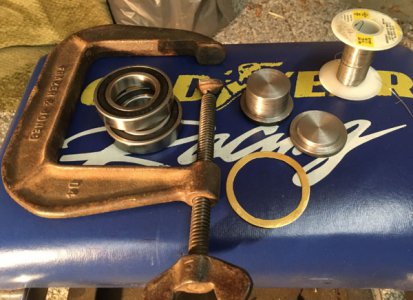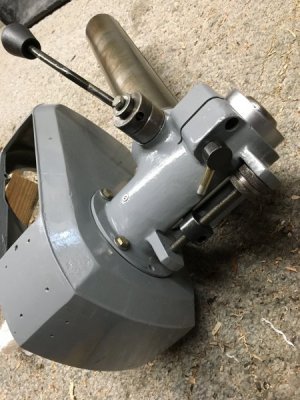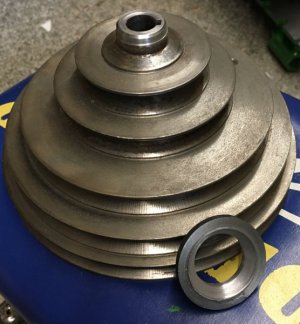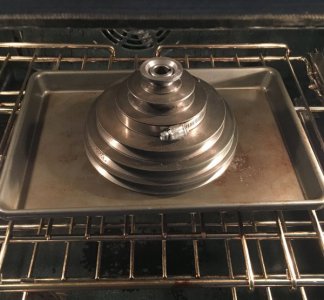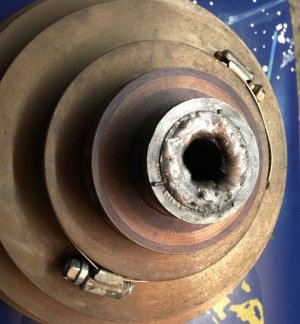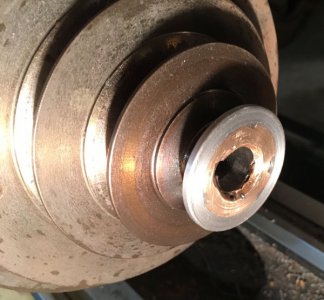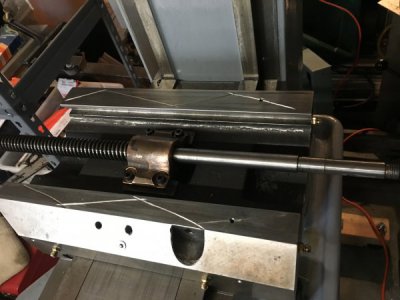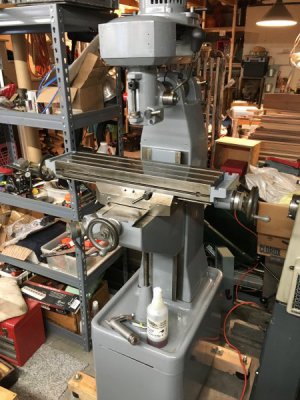- Joined
- Dec 12, 2016
- Messages
- 527
Re-posting after server crash issue...
I recently acquired one of these vertical mills, and will be rebuilding and refinishing it as time permits. Most of it is
still in pieces, but I managed to just complete the spindle rebuild. I leveraged some ideas posted on the Yahoo Rockwell
Milling Machine group, which includes some improvements over the stock setup.
I am using a duplex set of Nachi Super Precision 7008CYDU/GL P4 angular contact bearings for the lower spindle bearings,
from ebay. These are provided in matched sets and are to be installed "back-to-back" ("DB"). The races had some markings
on them (the high spots?) which I positioned on opposing sides.
The original fit on the spindle was a bit sloppy, with about 0.001" clearance (for both old and new bearings). I used some
0.0005" stainless shim stock strips to tighten this up to a light press fit, and make everything concentric. I found that
you need to shim each bearing separately, and cut off the excess shim before it fully bottoms out with a utility knife, as
the bearings tend to pull the strips down with them. 1.5" PVC drain pipe makes a good mandrel for installing these. The
bearings were lubricated with Kluber IsoFlex NBU 15 spindle grease.
The bearing retainer (#90) was modified to accept a SKF 17897 oil seal (or equivalent, as used here). This seal is used in
automotive timing cover applications so should be up to the task. This requires turning a pocket about 2.283" diameter by
about 0.3" deep. I used a carbide boring bit as the material was fairly tough (half hardened?).
The upper spindle bearing (#85) was replaced with a new MRC R16ZZ bearing, which has rubber seals. I popped the seals and
repacked it with the Kluber grease. The original fit in the quill for this bearing was a press fit. I used some emery
cloth on the lathe to open this up to a barely sliding fit, so the wavy washer is able to do its job. The press fit on the
spindle shaft was kept, and 3/4" copper pipe used to drive it home.
After assembly, I measured the TIR at the R8 taper and found it to be around 0.0005". The spindle turns slightly firmly,
with no discernible play. Everything seems to be a good fit.
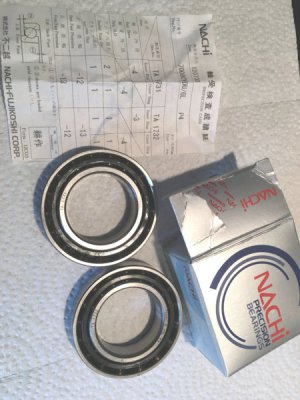
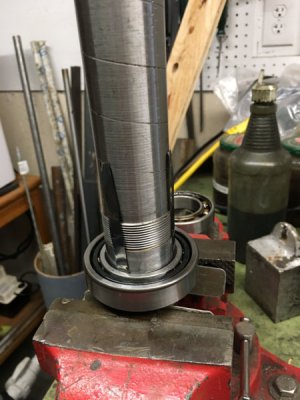
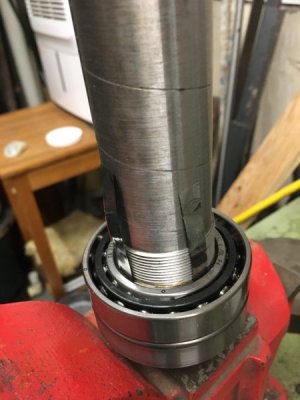
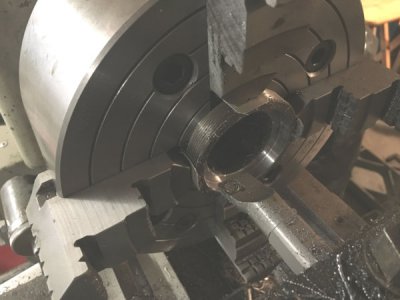
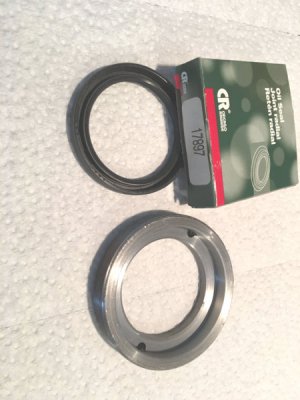
I recently acquired one of these vertical mills, and will be rebuilding and refinishing it as time permits. Most of it is
still in pieces, but I managed to just complete the spindle rebuild. I leveraged some ideas posted on the Yahoo Rockwell
Milling Machine group, which includes some improvements over the stock setup.
I am using a duplex set of Nachi Super Precision 7008CYDU/GL P4 angular contact bearings for the lower spindle bearings,
from ebay. These are provided in matched sets and are to be installed "back-to-back" ("DB"). The races had some markings
on them (the high spots?) which I positioned on opposing sides.
The original fit on the spindle was a bit sloppy, with about 0.001" clearance (for both old and new bearings). I used some
0.0005" stainless shim stock strips to tighten this up to a light press fit, and make everything concentric. I found that
you need to shim each bearing separately, and cut off the excess shim before it fully bottoms out with a utility knife, as
the bearings tend to pull the strips down with them. 1.5" PVC drain pipe makes a good mandrel for installing these. The
bearings were lubricated with Kluber IsoFlex NBU 15 spindle grease.
The bearing retainer (#90) was modified to accept a SKF 17897 oil seal (or equivalent, as used here). This seal is used in
automotive timing cover applications so should be up to the task. This requires turning a pocket about 2.283" diameter by
about 0.3" deep. I used a carbide boring bit as the material was fairly tough (half hardened?).
The upper spindle bearing (#85) was replaced with a new MRC R16ZZ bearing, which has rubber seals. I popped the seals and
repacked it with the Kluber grease. The original fit in the quill for this bearing was a press fit. I used some emery
cloth on the lathe to open this up to a barely sliding fit, so the wavy washer is able to do its job. The press fit on the
spindle shaft was kept, and 3/4" copper pipe used to drive it home.
After assembly, I measured the TIR at the R8 taper and found it to be around 0.0005". The spindle turns slightly firmly,
with no discernible play. Everything seems to be a good fit.






